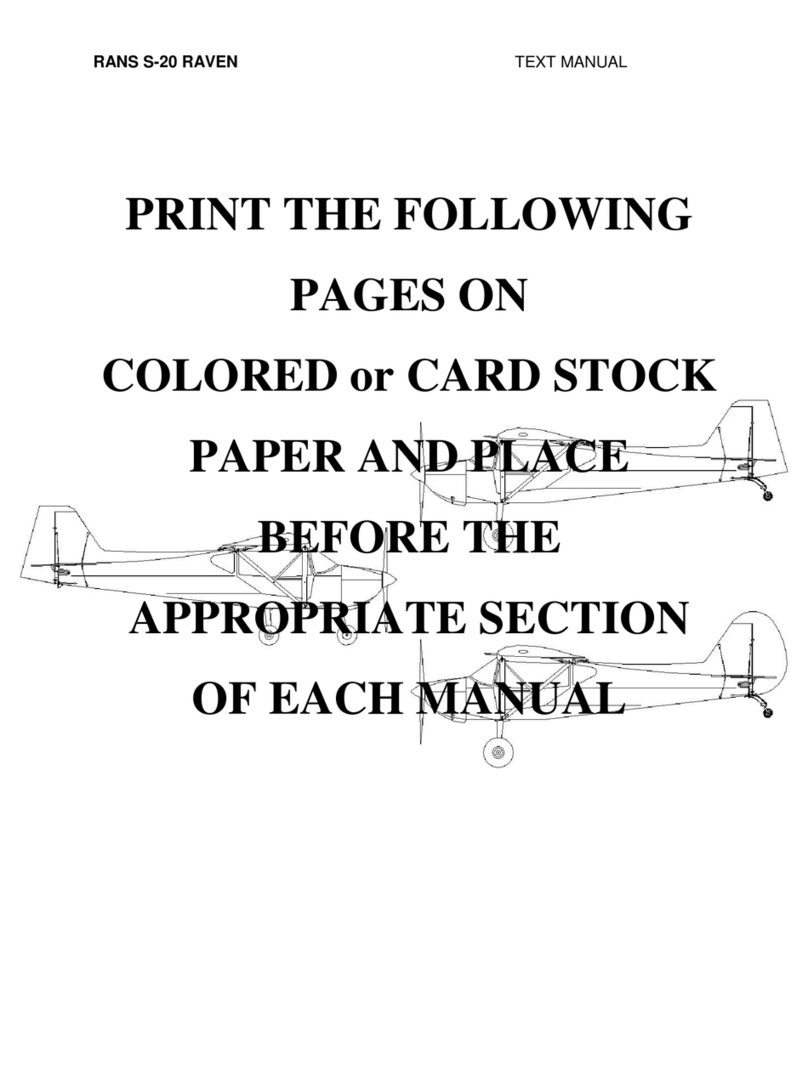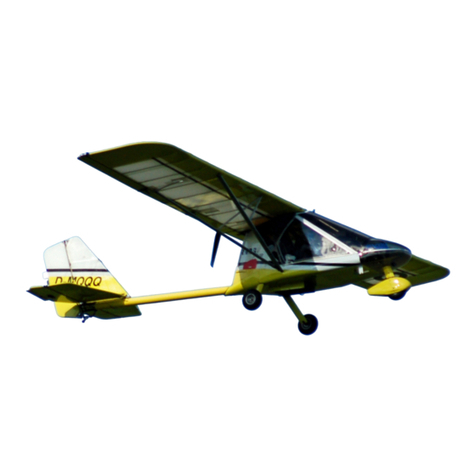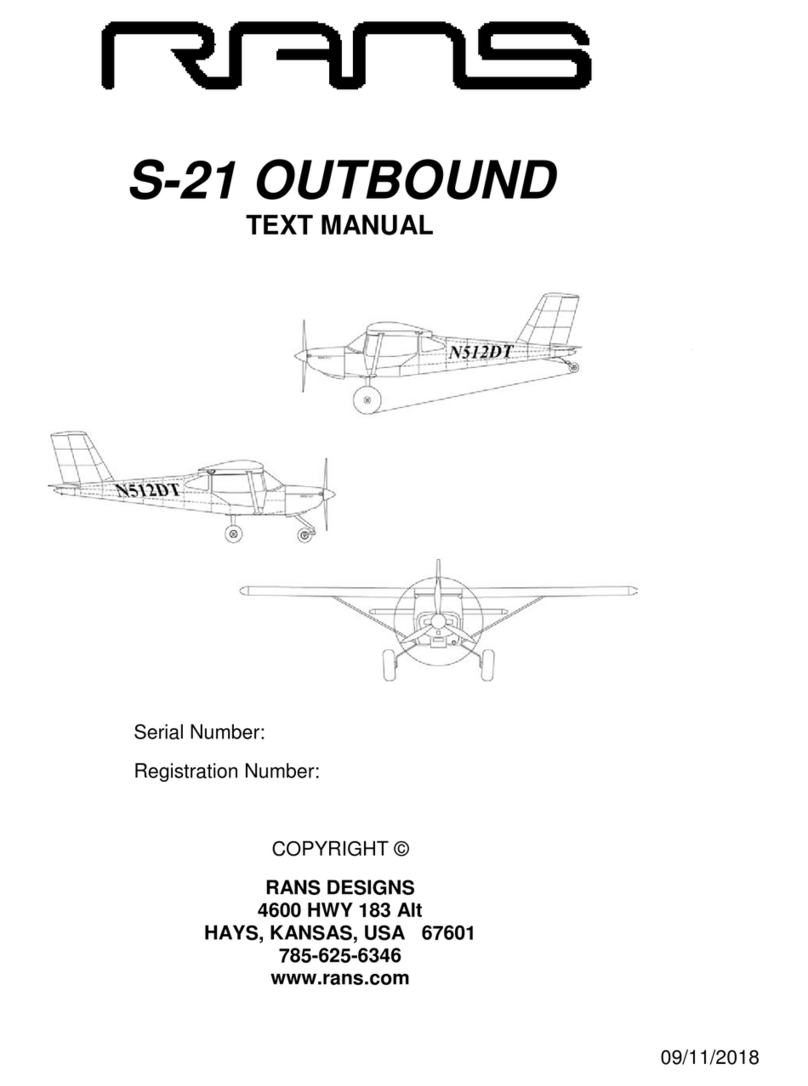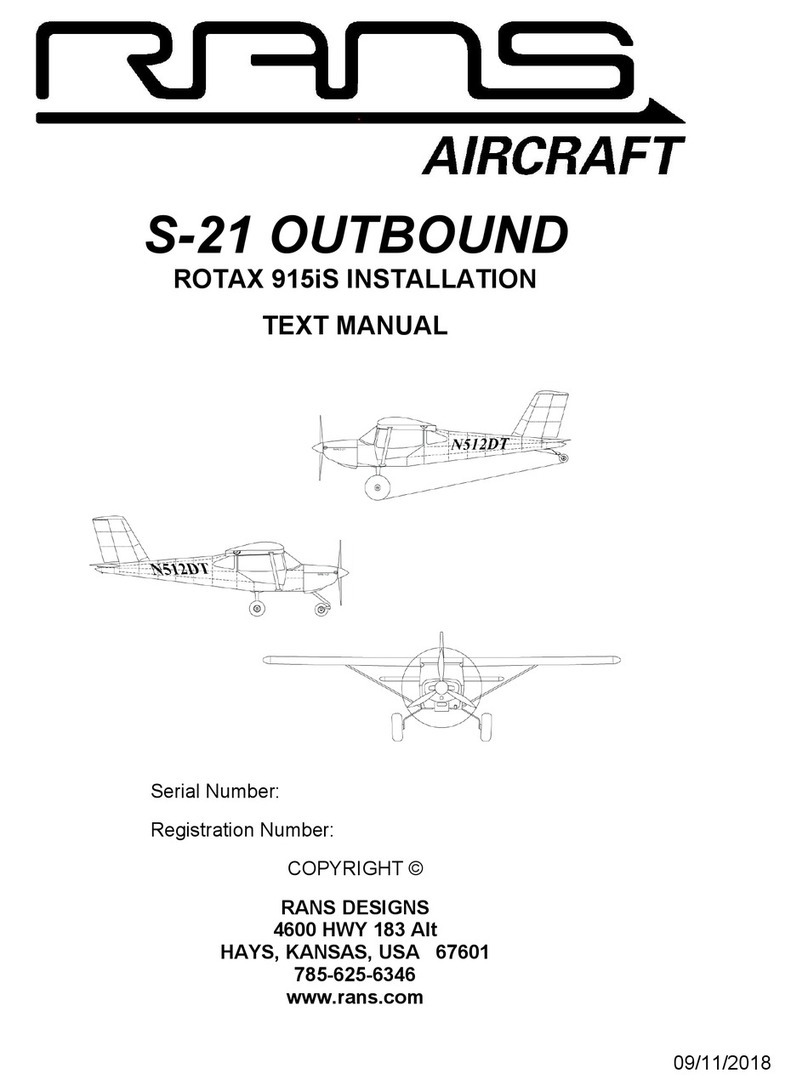
Rans Inc. Section 1
Model S-7LS COURIER General Information
Revision - B May 8, 2007 1- 4
INTRODUCTION
This handbook contains 8 sections.
The pilot should study the entire handbook to familiarize himself with the limitations,
performance and procedures applicable for this aircraft.
Section 1 provides general information and system descriptions.
AIRPLANE AND SYSTEMS DESCRIPTIONS
AIRFRAME
The primary airframe construction material is tubular aircraft grade aluminum and steel.
Primary items of the structure are the fuselage and tail structure. The fuselage and tail
structure are of steel truss construction. The flight controls, main wheels, and seats are
attached to the forward part of the fuselage. The empennage (tail assembly) is attached
to the aft section of the tail structure. The fuselage and tail structure are covered with
polyester fabric type covering.
The externally braced wings are comprised of a tubular leading edge and trailing edge
spar joined by compression and diagonal struts. Formed ribs maintain the airfoil shape.
The leading edge and trailing edge spars are equipped with strut attachment fittings.
Conventional hinged ailerons are attached to the outboard section of the trailing edge
spar of the wings. Conventional flaps are attached to the inboard section of the trailing
edge spar of the wings. The wing, ailerons and flaps are covered with polyester fabric
type covering.
The tail assembly consists of a conventional vertical stabilizer, horizontal stabilizer,
rudder, and elevator. The stabilizers are braced with stainless steel rods. The right
elevator carries a servo- adjustable trim tab. The left elevator has a fixed stability tab (do
not adjust). The tail assembly is covered with polyester fabric type covering.
FLIGHT CONTROLS
The aircraft's flight control system consists of conventional aileron, rudder, and elevator
control surfaces.
The ailerons are manually operated through cables to bell cranks in each wing and short
push pull tubes from bell crank to aileron.
The elevators are operated through push pull tubes via a bell crank.
The forward and rear rudder pedals are connected through link tubes and the rear
pedals via cables to the rudder. By pushing the left rudder pedal the aircraft yaws to the
left and the right pedal yaws the aircraft to the right. All flight control surfaces are of
tubular construction with fabric covering.
The aircraft has the following controls at both seats.
-Control sticks









































